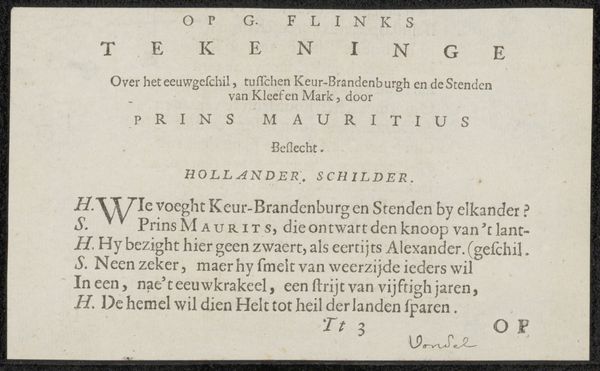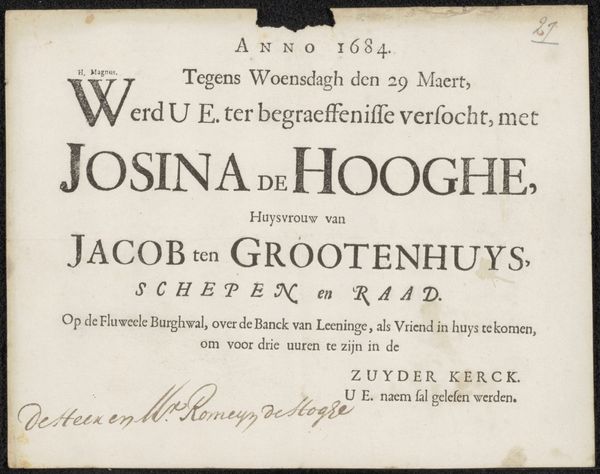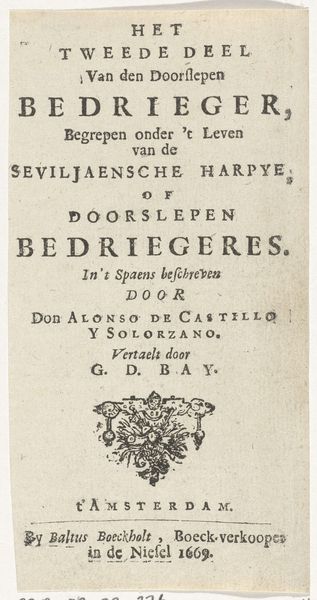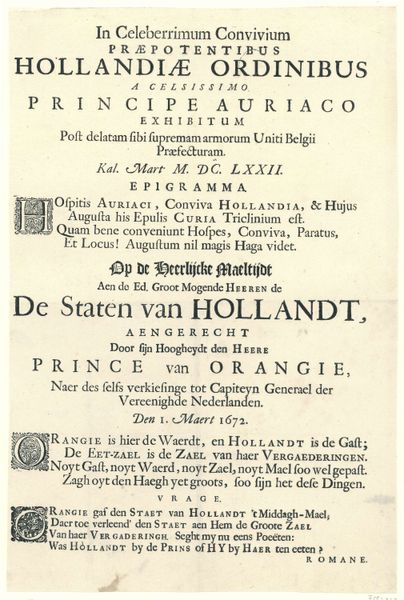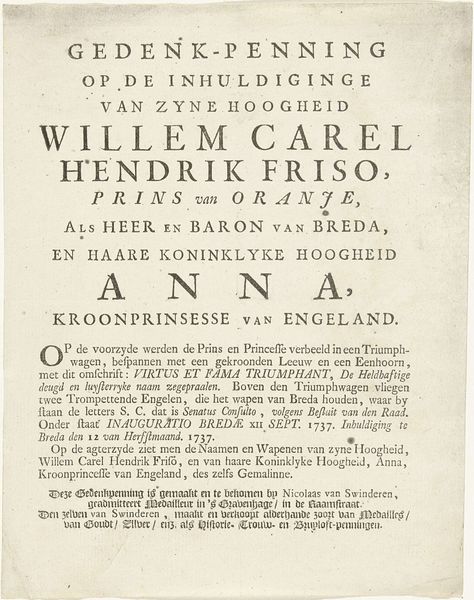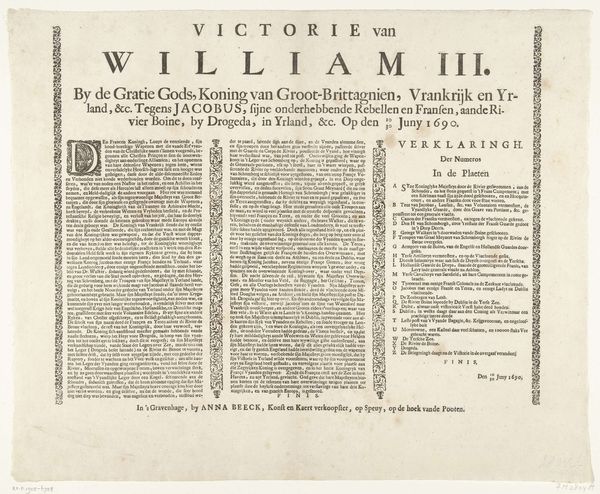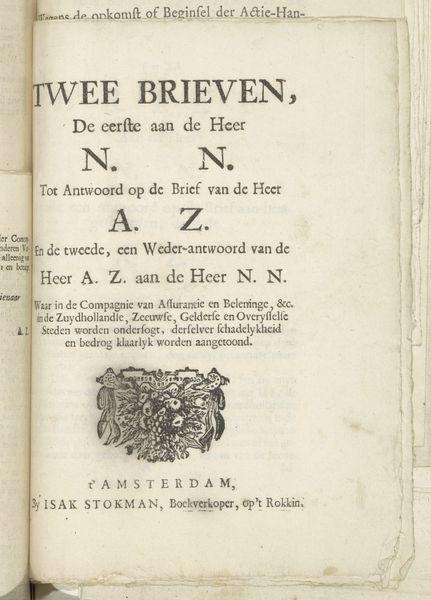
print, paper, typography
#
aged paper
#
hand-lettering
#
dutch-golden-age
# print
#
hand drawn type
#
hand lettering
#
paper
#
personal sketchbook
#
typography
#
hand-written
#
hand-drawn typeface
#
fading type
#
thick font
#
handwritten font
#
calligraphy
Copyright: Rijks Museum: Open Domain
Editor: This is a fascinating piece – an invitation to the funeral of Martina van der Hulst, dated 1680. It’s a print on what looks like aged paper, with beautiful hand-lettering. I find it really striking how direct and utilitarian it is. What stands out to you when you look at this invitation? Curator: What immediately grabs me is how this seemingly simple announcement reveals the complex social structures of the Dutch Golden Age. This wasn't just about informing people; it was a performance. Invitations like these, specifically for funerals, were carefully managed public events. Note the specificity - "Tuesday, the 10th of September, at two o'clock precisely." It wasn’t merely the death that mattered, but the carefully choreographed mourning rituals. Consider the line indicating mourners are to assemble wearing a long mantle ("lange Mantel") - do you see that almost as a uniform being stipulated, reflecting social hierarchy even in grief? Editor: That's interesting, the idea of "performing" grief and controlling the narrative around death. I hadn’t considered the "long mantle" instruction as something potentially hierarchical. Curator: Exactly! Also, invitations like these served as announcements of status, an attempt to cement legacy. Printing, typography, even paper were luxury goods, weren't available to the masses. How would an invitation such as this dictate class differences during the event of a funeral, do you think? What considerations may have taken place from design to production to even receipt of the announcement? Editor: That's such a great perspective – it really sheds light on the social function of this seemingly simple document. The thought that every element of the invitation – the paper, the typeface, the very act of distribution – would have contributed to this performance is fascinating. Curator: Indeed! These weren't passive communications; they were active participants in the social and political theatre of their time. Understanding their intended public role gives them incredible historical weight. Editor: I'll never look at a simple invitation the same way again! Thank you.
Comments
No comments
Be the first to comment and join the conversation on the ultimate creative platform.
